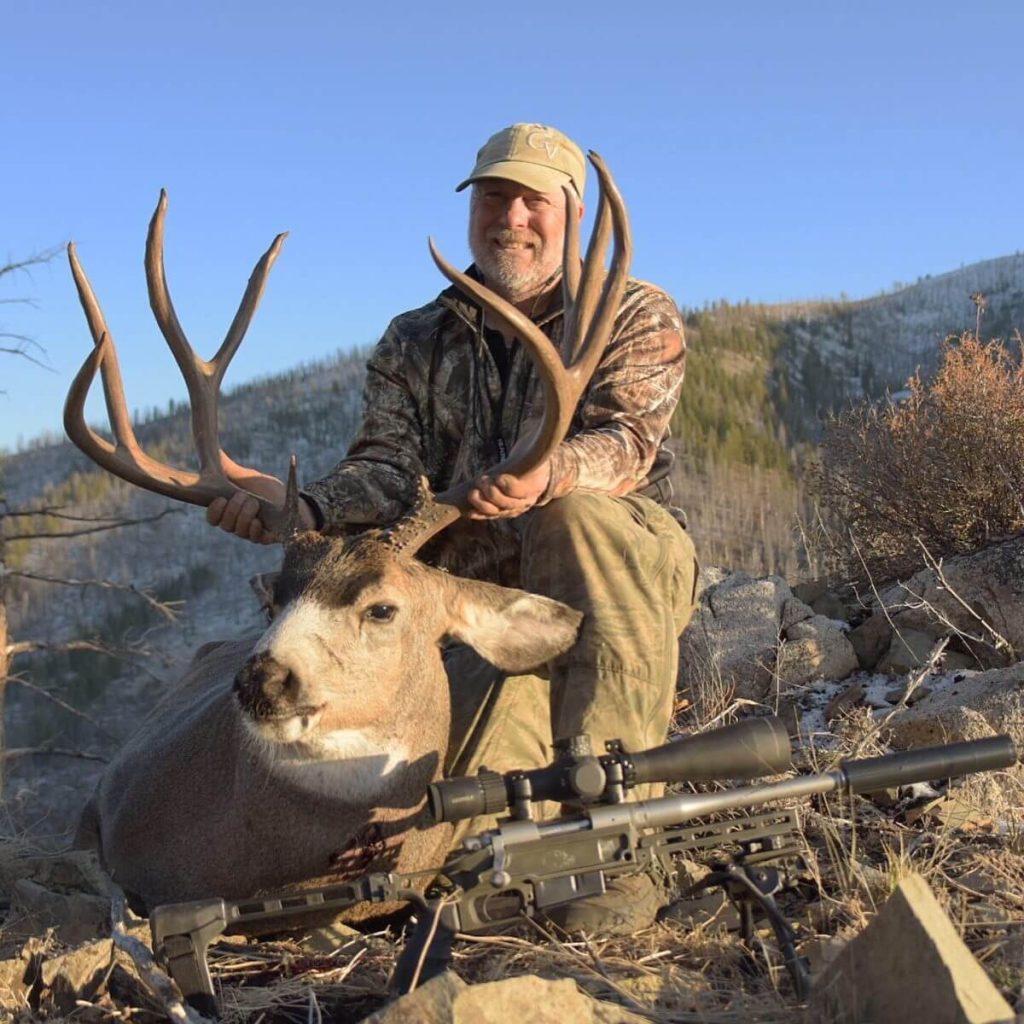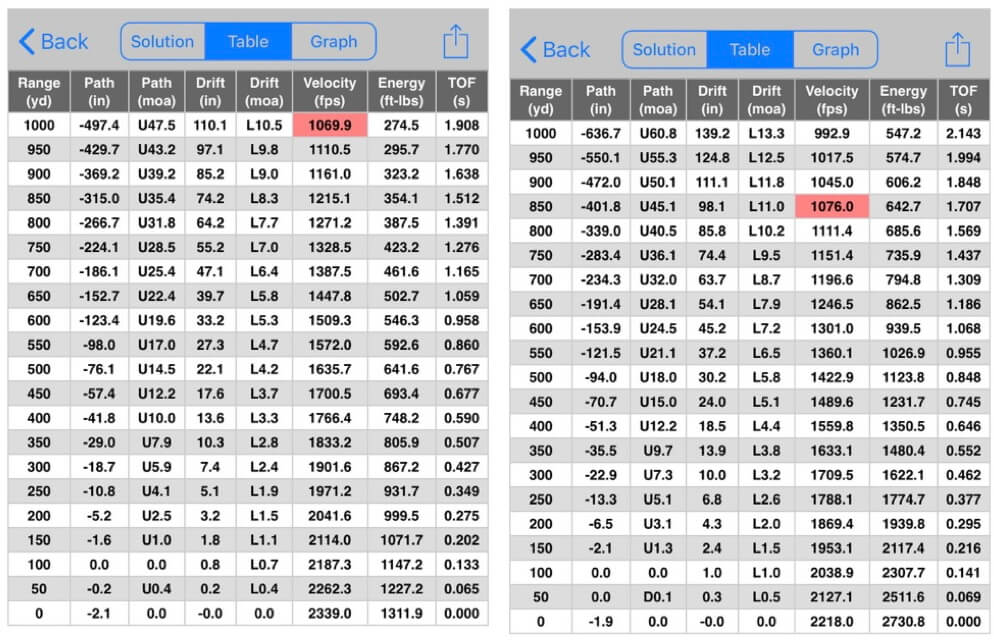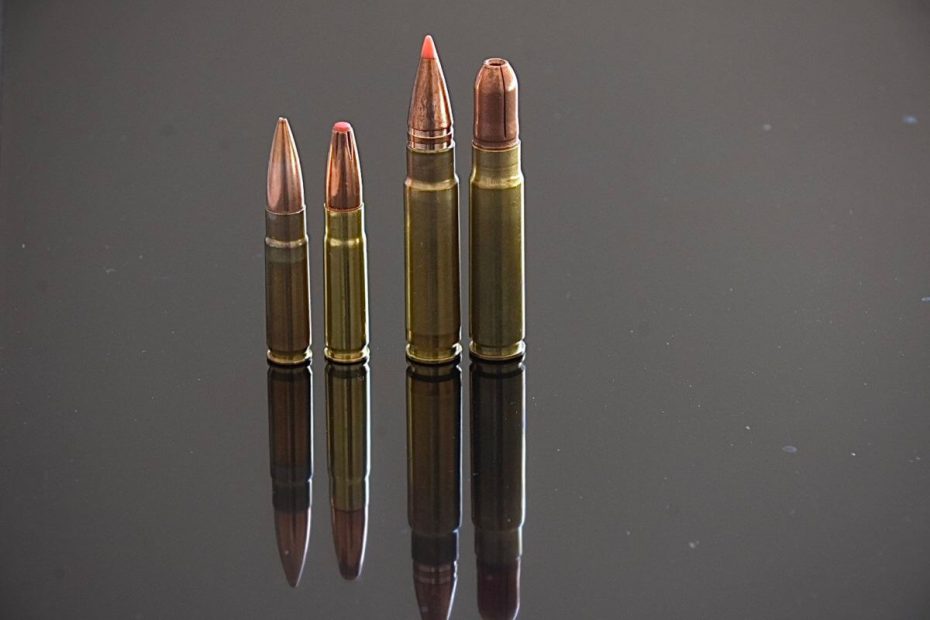

As with everything, choosing a cartridge for suppressed hunting is full of good, better, and best options. A few things constitute a great suppressed hunting rifle; it has to be short, lightweight, versatile, and hard-hitting. A good suppressed rifle is short because you want to add a suppressor on the end, extending the overall length of the system. There is a point where the weapon becomes awkwardly long and hangs you up on every branch you walk under, which we want to avoid. The system needs to be lightweight because you’ll be carrying it all day, everywhere. Versatility is important in the way that I want to have a hefty subsonic bullet in the chamber for ultimate stealth and close-range kills, backed by supersonic loads that I can easily chamber to reach out past a few hundred yards and fill a tag in a situation where stalking closer is not an option. And of course, you want the firearm to kill the things you shoot with it, so it needs to be a heavy hitter. 375 Raptor is the cartridge that I would place in the “best” category for each of these criteria. It can deliver 400 grain monolithic subsonic bullets that expand to over 1.5″ in diameter, or 200 grain lead-core supersonic bullets, and everything in between. I have an 11″ barreled bolt action pistol chambered in 375 Raptor that is unnaturally quiet with subsonics, and has a max effective range of around 900 yards with supersonics. But you aren’t limited to bolt actions with the Raptor because you can easily build an AR10 chambered in the cartridge.
The 375 Raptor shares the same case head dimension as the 308 Winchester, but the similarities stop there. The 375 Raptor case is 0.015 inches shorter than the 308 Winchester and has a 35-degree shoulder vs the 30-degree shoulder of the 308 Winchester. Because of their similarities, the 375 Raptor case can be made easily by most reloaders since it is very similar to the 308 Winchester’s dimensions. I simply run spare 308 Winchester brass through a 375 Raptor die and trim the neck down. Once that is done, I am ready to load this modified brass with a primer, gunpowder, and a bullet.

Cartridge Selection for Hunting
Before I go into more detail about why the 375 Raptor is so amazing, I first need to establish the importance of several factors that play a role in the effectiveness of using subsonic loads for hunting. First, energy delivered to the target is most effectively done through increasing velocity, which can be seen in the formula where kinetic energy=(1/2)mass*velocity². However, for subsonic hunting, we are limited to ~1050 FPS, which varies with elevation and other factors. With the velocity variable fixed, the only way to increase energy is through mass. Therefore, 300 BLK shooting a 220 grain bullet will be outperformed by 338 BLK shooting a 300 grain bullet, which will be one-upped by 375 raptor with a 400 grain bullet. Admittedly, I’m overlooking the rotational energy of the bullet which can be calculated by: RE = 1/2 * I * ω² but this discussion could constitute an entire article in itself. In short, increase the weight/diameter of the bullet and rotational energy goes up. Likewise, increase RPM and it goes up. To be fair though, a guy could custom order whatever twist barrel for any caliber that he wants and therefore bullet RPM can’t define the performance of a cartridge. The last variable that affects terminal performance, which I want to discuss is the cross-sectional area. The bigger the diameter of the bullet, the bigger the cross-sectional area of the expanded bullet and the more flesh that is damaged upon impact. This is the reason why 375 caliber or bigger is required to hunt some dangerous game in Africa, for example. Yet another reason that the 375 Raptor outshines the up-and-coming 338 BLK; you can legally use it for dangerous game in Africa, and the reasoning is backed by physics.

If diameter and weight are all that matter in suppressed hunting, why not go with a 45 or 50 caliber? The answer is simple: I am not interested in any cartridge that will severely limit my effective range, and neither should you be. These low velocity, low ballistic coefficient, high caliber bullets in this caliber range will do just that. I hunt with an 11″ barrel. At this length, 375 Raptor is optimized in velocity and ballistic coefficient of available bullets. I can get higher velocities with a 200 grain bullet in the 375 Raptor than I can in a 308 Winchester in this length barrel, and I only get slightly less velocity using a 270 grain bullet in the 375 Raptor (2240 FPS) than I get using a 108 grain bullet in a 6mm Creedmoor (2336 FPS). This counterintuitive velocity discrepancy is due to the large air volume in the 375 caliber bore that allows a fast, even, and complete powder burn at lower peak pressures than in smaller bore cartridges. A few years ago, my 11″ barreled 6mm Creedmoor KO’d a deer at 500 yards on the dot, using a 108 grain Hornady ELD-M. It was at this moment I realized that I could further extend my range by increasing the weight of the bullet if I was unable to get more velocity from this short barrel length. This is seen in a simple ballistic calculation where the 375 Raptor with a muzzle velocity of 2220 FPS, shooting a 250 grain Hornady GMX with G1 BC of 0.440 puts down 1123 Ft/Lbs of energy while the 6mm Creedmoor with a muzzle velocity of 2339 FPS, shooting a 108 grain ELD-M with G1 BC of 0.536 puts down 641 Ft/Lbs of energy at the same range. I practice regularly out to 800 yards with the 375 Raptor pistol with great success and would not hesitate to shoot game within 600 yards with it.

Cartridge Choice and the Impact of Suppressor Selection
Particularly for subsonic hunting, you want your weapon system to be quiet. Or else, why hunt with subsonic projectiles? There are only three important variables in my mind that should affect cartridge selection for hunting suppressed that relate to quietness; cost, weight, and length of available suppressors compatible with your cartridge. Typically, larger bore suppressors are louder than smaller bore suppressors. I’d argue that this doesn’t have to be the case because efficiency is altered only by the quality and design of the suppressor. What would be true though, is that quiet large bore suppressors will be longer than equally quiet small bore suppressors. This is due to the larger diameter bore allowing more gasses to escape over an equal distance. At present, my favorite suppressor design/company is AB Suppressor. Their Raptor (fitting name for the article) suppressors are large-volume, 100% titanium, and feature a reflex section that increases the volume of the suppressor while not adding to the overall length of the firearm. I reached out to them years ago and was invited to their manufacturing plant to test every suppressor configuration that they offer on my personal 375 Raptor. While there, I found that their largest suppressor yielded the best results. Surprise! But what was surprising was how quiet it actually was, metering at sound levels nearing suppressed 22 LR, the 375 Raptor was throwing 400 grain bullets and producing 112.5 dB. Now let’s say that all subsonic cartridges can be tamed down to similar sound levels, this leaves only length and weight in my decision-making criteria. Sticking to AB Suppressor, the difference between their Raptor 6 with no reflex (which would be great for 300 BLK) and the Raptor 8 with no reflex (great for 375 Raptor) is 1.2 ounces and 0.8 inches in length. The Raptor 8 is neither heavy nor long, measuring 8.05 oz and 6.3″ long. Personally, this difference in length and weight due to caliber selection is not going to make me not choose the 375 Raptor. Oh, and you can get an AB Suppressor Raptor for under $1,000! This is very affordable when compared to other 375 caliber suppressors, and surprisingly less than some of the most popular 30 cal suppressors.

Suppressors Delivered to Your Door
One call, does it all. Select your suppressor, create your trust, fit your gun, deliver to your doorstep. Silencer Central – Simple, Smart, Easy! Call 888-781-8778 or visit [track-link url=”https://www.silencercentral.com/about-us/” campaign=”SuppressorAcademy_SilencerCentral_CallOut” target=”_blank”]https://www.silencercentral.com/about-us/[/track-link]
Bullet Selection/Versatility
The two bullets that I use most often for my 375 Raptor are the 400 grain expanding Maker Bullets ($1.20 each) and the 270 grain Speer BTSP ($0.58 each). Bullet cost is not much more than what you’d find in 30 cal or 338 cal offerings. In 30 caliber, you may use the 210 grain MatchKing HPBT ($1.00 each) or 150 grain Speer spitzer boat tail ($0.27 each). In 338 caliber, you could go with the 300 grain Sierra Matchking HPBT ($1.20 each) or the 180 grain Nosler Accubond ($1.32 each). I’ve even killed dangerous game with both mentioned 375 caliber bullets. My 375 Raptor has an 11″ barrel and a folding pistol brace, making it perfect for carrying around while guiding bear hunts in Idaho. There have been several situations where the client has had to shoot this gun, two of which were 12-year-old boys that were afraid of recoil. I can attest that this setup knocked their bears out of the trees DRT without a single complaint of recoil from the boys.
If a massive selection of 375 caliber bullets is not attractive to you because you don’t reload your own ammunition, several options of factory-loaded ammo for the 375 Raptor should be. TNT Munitions and Omega Rifles offers an array of loaded ammunition, where TNT specifically has 190, 250, 270, and 400 grain options available. Fortunately, or unfortunately, this ammunition is much easier to obtain than any 338 BLK is at the moment. But at the end of the day, the best cartridge for suppressed hunting is the one that you use effectively, so tell me about your setups in the comments below!
***Buy and Sell on GunsAmerica! All Local Sales are FREE!***
